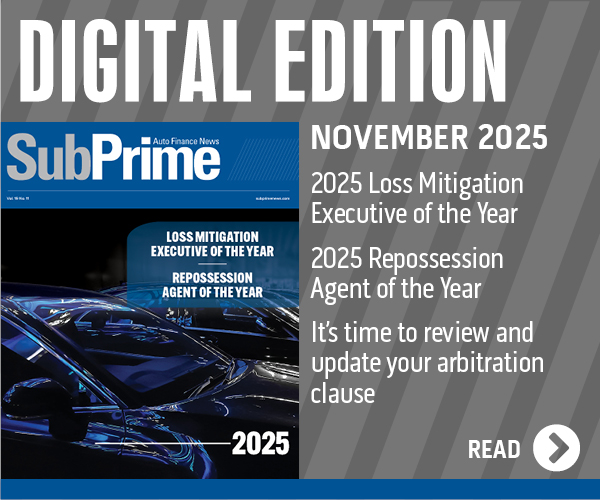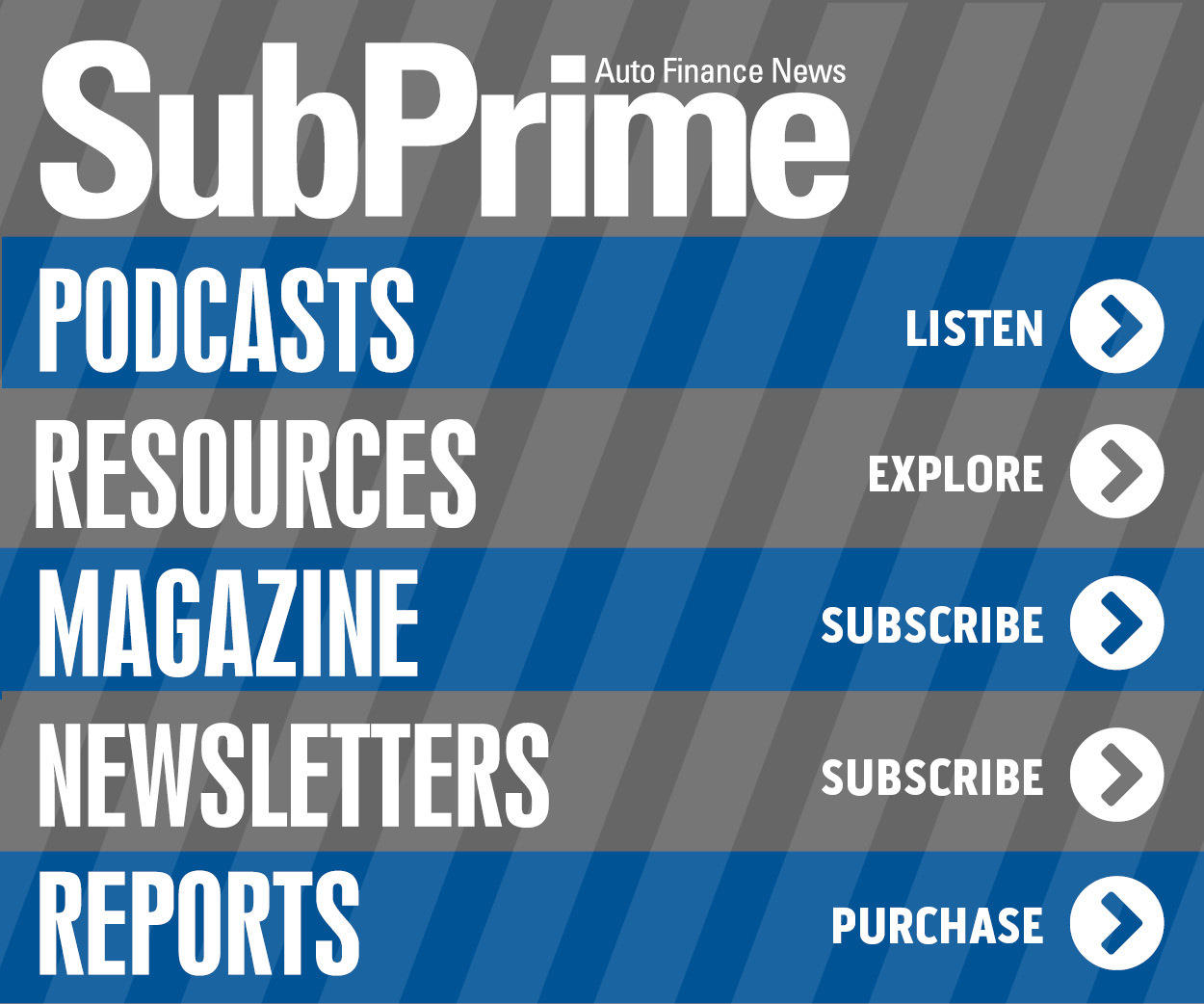COMMENTARY: Is your payments platform safeguarding compliance?

By subscribing, you agree to receive communications from Auto Remarketing and our partners in accordance with our Privacy Policy. We may share your information with select partners and sponsors who may contact you about their products and services. You may unsubscribe at any time.
For many Americans with shaky credit, keeping up with car payments is becoming a growing struggle, and the numbers prove it.
Subprime delinquency rates surged to record highs in 2023 and continued climbing in 2024, with the 60-plus-day delinquency rate reaching 6.15% in December. This upward trend is expected to persist through 2025. The impact is significant, considering subprime lending represents nearly 17% of all financed auto deals.
The surge in subprime auto loan delinquencies is putting more pressure on lenders — not just financially, but in terms of compliance. Ensuring compliance isn’t just about avoiding penalties—it’s also essential for delivering a transparent and frictionless consumer experience that builds trust and reduces disputes.
Here are five compliance challenges affecting subprime auto lenders, and how the right payments platform can address them.
- Final payment management for credit-challenged borrowers
Subprime borrowers are particularly sensitive to payment inconsistencies, with many living paycheck-to-paycheck. When final autopay payments process differently than expected, these borrowers face potential overdrafts and further financial strain that can damage already fragile customer relationships.
Modern payments platforms can integrate with your core system to support intelligent autopay functionality that verifies and adjusts final payment amounts based on the actual remaining balance. Rather than debiting the standard monthly amount regardless of the payoff balance, these systems can automatically adjust the final payment to the correct amount, preventing both underpayments and overpayments.
Subscribe to Auto Remarketing to stay informed and stay ahead.
By subscribing, you agree to receive communications from Auto Remarketing and our partners in accordance with our Privacy Policy. We may share your information with select partners and sponsors who may contact you about their products and services. You may unsubscribe at any time.
One major auto lender previously sent more than 35,000 refund checks monthly for autopay overpayments—a costly process creating poor customer experiences and an administrative burden. With intelligent autopay functionality, it eliminated these unnecessary refunds entirely, improving both operational efficiency and customer satisfaction. For buy-here-pay-here dealers managing thousands of loans, automated final payment handling can eliminate this process-heavy refund burden while ensuring compliance.
- Payment change notifications for higher-risk portfolios
Subprime lenders often apply late fees, payment restructuring or additional charges that modify upcoming payment amounts. For borrowers with minimal financial cushion, unexpected payment changes can trigger account delinquencies and defaults. For lenders, failing to properly notify borrowers of these changes creates regulatory compliance risk.
Modern payments platforms include automated notification functionality that can detect these changes and alert borrowers through their preferred communication channels. These systems can automate these communications through rules-based logic or file-based processes, giving lenders flexibility in implementation while ensuring borrowers receive proper notification before modified payments are processed.
- Enhanced data security for higher-scrutiny portfolios
Subprime lenders face intensive regulatory scrutiny around their data handling practices. With limited internal IT resources, many mid-market subprime lenders struggle to maintain robust security infrastructure that keeps pace with evolving threats and compliance requirements.
Modern payment platforms incorporate multiple security layers, including advanced encryption that protects account-level data with unique decryption keys and tokenization that replaces sensitive information with secure tokens.
These systems can also leverage artificial intelligence to analyze transactions in real-time, identifying suspicious patterns and potential fraud before they become problems.
The most effective payments platforms are supported by specialized risk mitigation teams who continuously monitor emerging threats and tailor security solutions to each lender’s specific needs—delivering enterprise-grade security that would be cost-prohibitive for most independent subprime lenders to develop internally.
- Self-service payments reduce hold times (and compliance risk)
Subprime borrowers frequently need to contact their lenders for payment-related matters. When these borrowers face excessively long hold times while attempting to make payments, it creates compliance risk.
Look for a payments platform that enables customer service agents to send personalized payment links to borrowers, not only resolving immediate payment issues but training customers to use self-service options for future loan repayments.
For high-volume subprime operations handling hundreds of daily payment-related calls, training customers to self-serve significantly reduces the total number of incoming calls, naturally lowering hold times for borrowers who do need to speak with customer service.
The net: lenders can stay within hold time requirements and enable customer service teams to focus exclusively on borrowers who need more complex assistance beyond simple payment processing.
- Payment failure alerts and resolution paths
In the subprime space, every missed payment significantly increases the likelihood of default. When security-related payment failures—such as a card being blocked for suspected fraud—go undetected or uncommunicated, even reliable borrowers can unintentionally fall into delinquency.
Modern payments platforms can distinguish between different payment failure reasons—such as suspected fraud versus insufficient funds—and communicate appropriately with borrowers. For example, these systems can automatically direct borrowers to contact their financial institution for security flags or suggest alternative payment methods for insufficient funds.
These contextual alerts not only create clear resolution paths that help borrowers quickly address payment failures before they impact due dates, but also provide an auditable record of communication for compliance needs.
Rising delinquencies and shifting regulatory expectations create new challenges daily. By embedding compliance intelligence directly into payments workflows, modern payments platforms enable mid-market lenders and buy-here-pay-here dealers to maintain regulatory compliance even as requirements change—protecting today’s business while building resilience for tomorrow’s compliance challenges.
Steve Kramer is the vice president of product at PayNearMe, where he leads the product development team. With more than 25 years of payments and product experience, Steve ensures PayNearMe’s solutions lead the market by reducing consumer friction and offering the widest range of payment options and channels, all while staying focused on security and reliability, to ensure clients collect every payment, every time.


